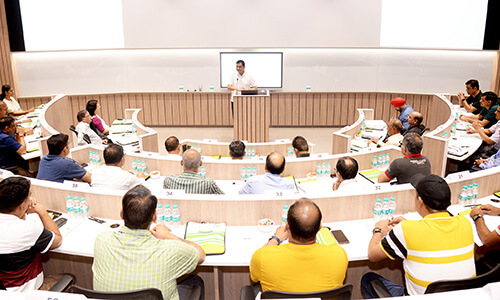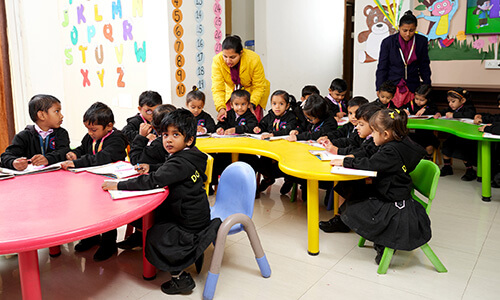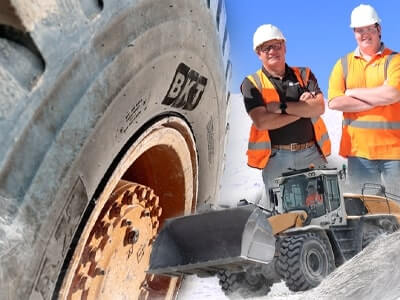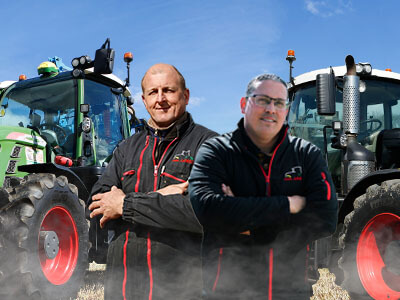GUEST 4 – SARAH BELL
Right, we’ve heard from the scientists and the experts. But what about the farmers themselves? How do we translate theory into actions? What are the practical steps that put soil health at the top of every farmer’s agenda and routine farming practice? And can modern farming and all its technology sit comfortably with maximising soil health? To answer these questions, our last guest is a farmer a farmer in Rutland, England’s smallest historic county. She’s also an adviser to agri-food companies, so has practical experience at opposite ends of the food and farming chain – and believes in a holistically balanced route to sustainable food production. Let’s welcome Sarah Bell…
Sarah you’re fascinated by soil health, aren’t you?
Thanks Adrian – yes I am! Perhaps I can start with an example from my own garden this year: I had some cause to move some soil that's been under grass on the edge of a piece of woodland for 20 years into my garden. And the difference I've seen between the sunflowers I planted in that soil and the sunflowers just planted in my conventional garden soil, really highlighted to me the difference soil can make. The sunflower in that woodland, beautiful, alive, friable, biological soil are just massive. The plant's massive, the flowers are massive, and they've gone on and on and on.
I think soil health is a really incremental thing when you improve it in the field. When you see an example of that it really sort of relights your passion to think we can make a real difference here. A powerful opening story to start with, but practically, how are you going to apply those findings over more than 1,000 acres?
Yes, that's always the challenge. We're big farmers so we've been committed users of farmyard manures forever, basically. So from the organic matter perspective, our organic matters are reasonably good. But how we have changed the way we physically manipulate soil is a big difference. That's come from a need for resilience. It comes from essentially starting with just reducing the amount we do from a cultivation perspective, from a tillage perspective. We started by moving to a single-pass system that moves less soil. Then we've gone to a direct drill system that moves even less soil. But it's about the whole system and how you manage rotation with that and how you manage the size of your machinery and all of those sort of things.
It sounds like you've come on something of a journey in your discovery of the importance of soil health. Where have you got your inspiration and your knowledge from? And I think importantly, as well, some of your confidence in tackling some of these practices and ideas, which just a few years ago, would've been considerably left field. Was there a specific moment of epiphany?
This has been about small steps, changing something, seeing a benefit, changing something else. You know, we didn't power into this on day 1 thinking we were going to change the world. We made a small adjustment into a single-pass system so we could burn less diesel, so we could use less labor, so we could have more family time. Then it became clear that that was helping. We thought, okay, how do we
take this to the next step and go to a direct drilling system? And that helped. Interestingly, one of the things
we've seen is it's changed the way even weeds grow in our soils. So actually, bizarrely, we have more weeds because they germinate better, because the soil's more fertile.
That's an interesting point, particularly when it comes to our fast reducing armory of herbicides and so on being able to control weeds. How have you done that with a min-till system? Do you still use the plow? How do you balance that with the carbon aspects of using it. Yeah, we do use the plow. We will go in and plow, 1 in 7, 1 in 8, 1 in 10. That's driven by where the weed spectrum is. Because if weeds get too comfortable and they get too much of a consistent environment. We can see them take hold, and we see that change in our weeds spectrum move toward sort of more brooms from black grass and things like that.
Essentially, we use the plow as a tool to just disturb that ecosystem slightly. However, what we have found is that because the soil is healthier, it bounces back quicker from the plow. There are no perfect scenarios in farming. It's a series of trade offs. Sometimes you have to take the rough with the smooth a bit and think which is the least damaging thing you can do?
Going back to your sunflower story from the beginning. You mentioned the chemical and the biological aspects of that story. Tell us a little bit more about the physical side, completing that triangle.
In terms of our soils, we've got some very heavy, very high mag clay soils. Therefore, we sort of have to manage those appropriately. We're in the bottom of a river valley. It floods, the climate's changing. We have more flooding than we've ever had. We're really trying to look at how we put resilience into our soils. Part of that is actually just lifting those soils where we see compaction. We do that with a low disturbance of soil and a low disturbance tying on that. Not at any great depth – it's just about loosening and allowing
that compaction to come out and the water to move better through the soil.
Do you think overall, are you in a good place environmentally and agronomically with these practices?
I think we're in a reasonable place. I never professed to say the journey's done because there's always more to do. However, if I was to do the perfect thing environmentally, I'd probably have a lot of my heavier, flatter lands down to grass. However, it's very fertile. It produces a lot of good crops, therefore it's about managing it in the most sustainable way possible and ensuring that those soils are there for me, there for the next generation, and there for generations beyond.
I think compared to many farmers, certainly in the UK, you're probably ahead of the curve when it comes to managing soil health on your farm. What advice would you give to somebody who's interested or inspired by what you're doing on your own farm?
Small steps, you don't need to be an expert in this. You just need to work with your advisors, work with the people who matter to you and your farm. Don't worry about what your neighbors think. Take those small steps, see the results. If the results aren't what you want have another go. Try something different.
But it really is about doing something that you reap the rewards of as a farmer. Spoken from experience, thank you Sarah.
Yes, thank you very much.
I like the fact that you put the emphasis on the small steps because altogether we can grow toward a better world
Thank you so much
step by step. Thank you very much. We're almost at the end of today's Global Trends.









